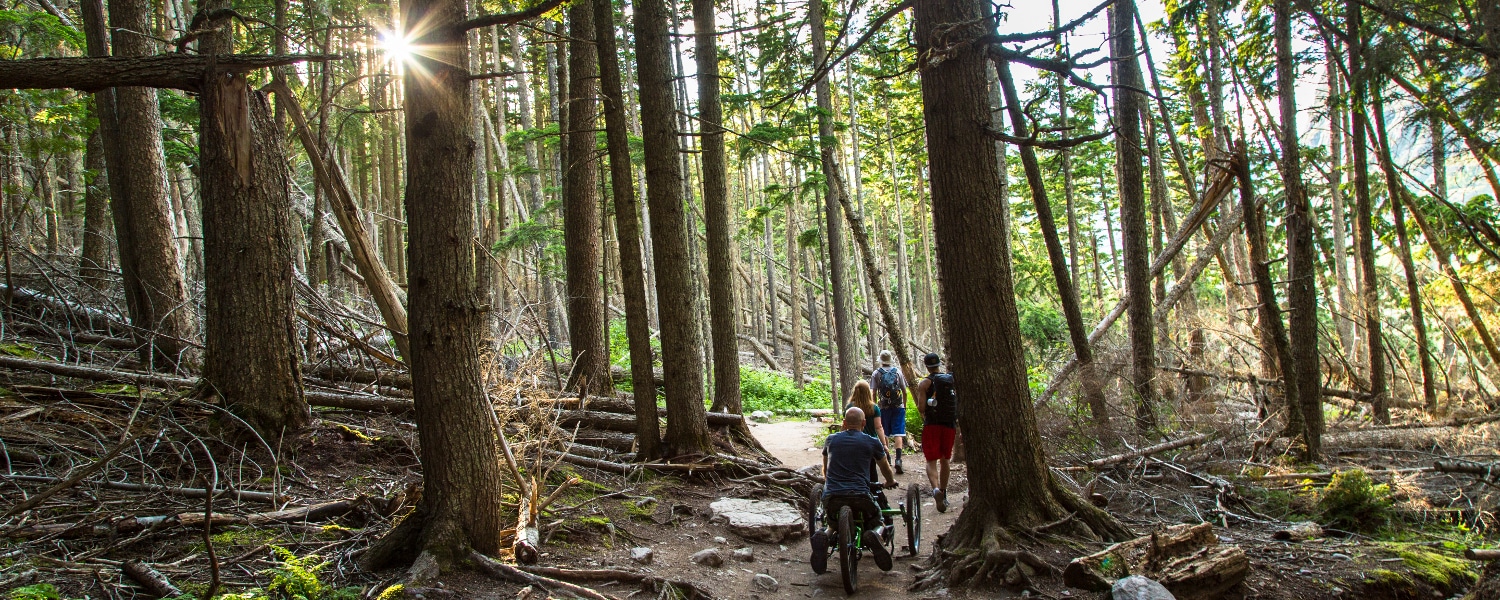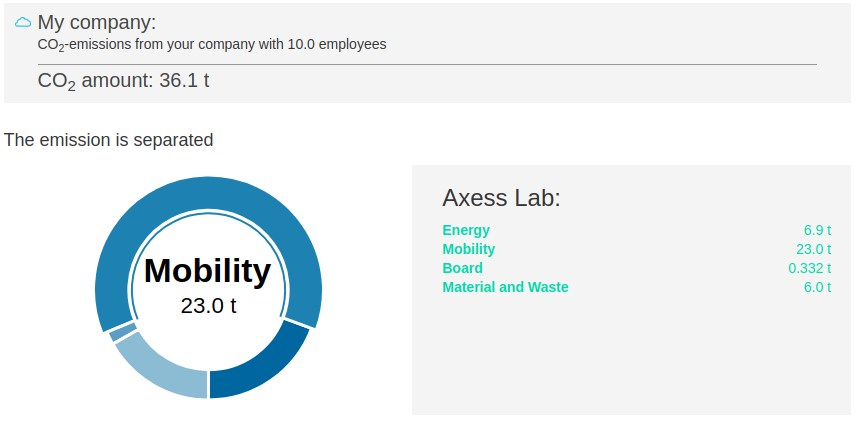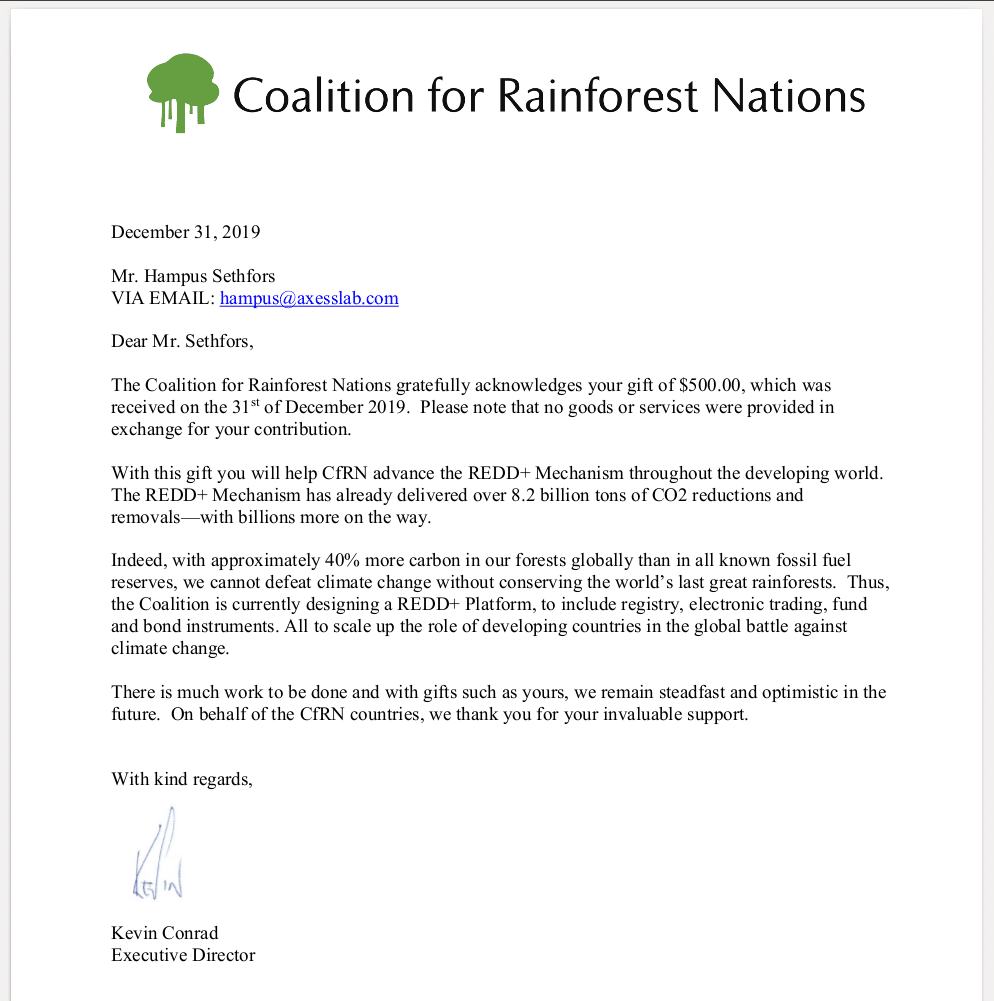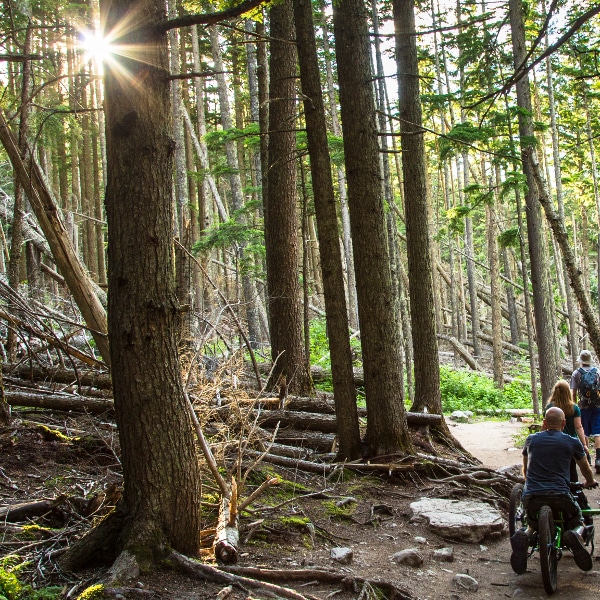
All businesses have an impact on our environment. It’s easy to see that if a company produces and sells goods they use raw materials and they use energy to transform them into products. You may even see the emissions with your own eyes coming from industrial chimneys and factories. But for companies selling services, or software companies like ourselves it can be more difficult to see where the environmental impact comes from.

We decided to learn what it would take for us to become a climate positive software/consultancy company, and we want to share it in this short article!
To become climate positive we needed to answer a few questions:
1. What is our organization’s yearly emissions – our ecological footprint?
2. What actions can we take to reduce this footprint?
3. How can we compensate for the remaining emissions?
As a small company with 10 employees we cannot spend a lot of time and money figuring this out though, so here is how we did it the “quick-and-dirty…hrm…quick-and-clean” way.
Luckily there are simple calculators online that can give you a rough estimate of the yearly emissions of your organization. We used one from “Zeromission”:
Zeromission footprint calculator
They have average values for companies that you may use if you don’t know your exact numbers, and you get your emissions broken down into it’s major components:

Taking actions
Looking at our breakdown we see that “Mobility” is by far our largest culprit, but it may be different for you. Here are steps we have already taken that may affect our results:
- We only serve vegetarian food at all our events.
- We all happen to use public transportation to get to work.
- We do most of our meetings digitally and rarely travel to see clients abroad.
These steps may or may not be possible for you. Even considering these steps, “Mobility” is still a large part of our emissions. We sat down and discussed the numbers, and here are steps we consider taking to reduce them even further:
- Use long distance train instead of flying when possible.
- Give employees subsidized public transport cards to avoid traveling by car.
- Invest in better software and hardware for digital meetings
Compensating for damage done
Now that we knew what our footprint was we wanted to find the most effective way to contribute financially to compensate for this. Luckily there is a movement called “Effective Altruism” and a book called “Doing good better” that explains it well.
We found an organization called “Cool Earth” that works to prevent deforestation of different rain forests, and it is described in this article about Cool Earth on givingwhatwecan.org
Cool Earth is the most cost-effective charity we have identified to date which works on mitigating climate change through direct action…We estimate that Cool Earth is able to reduce emissions by 1 tonne of CO2-equivalent for every $1.34 donated, for directly protected forest specifically (although this figure may be as low as $0.65). If indirectly shielded forest is also included, this drops to $0.38 per tonne of CO2-equivalent. This is 25 times less expensive than most carbon offset providers, which typically reduce emissions by 1 tonne for roughly every $10 spent.
We also found the Rainforest Coalition, a non profit organization that works on a political level. They were deemed very “high impact per dollar” according to this article on “Founders pledge” about climate change.
According to our cost-effectiveness model, a donation to CfRN will avert a tonne of CO2e for $0.12, with a plausible range of $0.02 – $0.72. Equivalently, a $100 donation to CfRN would avert ~857 tonnes of CO2e with a range of ~138 tonnes to ~4,600 tonnes. These estimates are highly uncertain. For context, the average person in the UK causes the emission of around 10 tonnes of CO2 per year, and it is generally considered to be difficult to avert a tonne of CO2e for less than $2.
We now calculated what we needed to donate using the “worst estimates” of impact per dollar to be on the sure side to compensate for our emissions. The number was still relatively low, maybe because we are digital accessibility consultants and as such we don’t have factories or production lines.
One part of working at Axess Lab is that all employees get to decide on how to use any profits each year. This year, based on the discussions above, we decided to use a part of the profits to donate equal amounts to the above mentioned organizations. Enough to put us on the “climate positive” side.

This is in no way a guarantee that we now have a positive impact on the environment. Estimates may be wrong, and most clever people recommend reducing our impact before compensating for it. But with the limited time and resources a small company has, this is something we can actually do right now!
The challenge
How much would it cost your company to become climate positive? What does your company already do to reduce your ecological footprint? What steps are you taking this year?
We hereby challenge other companies to calculate their footprint and let the world know what they are doing to reduce their impact, sharing it using the hashtag #climatepositive
#climatepositive
Thanks for reading, even if this article has little to do with digital accessibility! If you’re looking for a tech job in Stockholm, and you agree with our goal of holistic impact, please get in touch at [email protected].
If you liked this article…
…We don’t have any other similar articles :O Here are some about digital accessibility instead:
Get notified when we write new stuff
About once a month we write an article about accessibility or usability, that’s just as awesome as this one (#HumbleBrag)!
Get notified by following us on Twitter @AxessLab or Facebook.
Or simply drop your email below!
